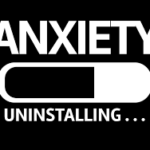Social media groups are an untapped goldmine of potential for marketers, which is why I’m shocked when people reveal they seldom (or never) utilize them. Think about it — groups are a free avenue for people with similar interests to share relevant information to a hypertailored audience without newsfeed algorithms minimizing their reach. The last part of the sentence is huge. Make sure you hear it again. Share relevant information to a hypertailored audience without newsfeed algorithms minimizing their reach. It’s the content marketers dream!
The benefit of groups extend far beyond more efficient content marketing. Below are some benefits of consistent group involvement, followed by tips to finding the best groups and utilizing group engagement to your advantage.
Benefits of Social Media Groups
- Establish yourself as an industry leader. By regularly posting insights and great content, you’ll be seen by your peers as an industry leader. And industry leaders see their business thrive.
- Reach new audiences. Posting in groups can spread your company’s name and content to an audience otherwise unfamiliar with you.
- Find new professionals to network with. With professional groups, you’ll be
 exposed to a wide range of professionals you otherwise might not come into contact with. When they interact with your post, you can send them a friendly message to connect and discuss the topic further. It’s a more personable way to acquire new connections across cyberspace.
exposed to a wide range of professionals you otherwise might not come into contact with. When they interact with your post, you can send them a friendly message to connect and discuss the topic further. It’s a more personable way to acquire new connections across cyberspace. - Drive traffic to your website. You can post (relevant) pieces of content in groups. Members who click on the post will be directed to your website, giving you the opportunity to grow website visits.
- Audience insight. Join groups tailored to your target audience and get a glimpse into their interests, needs, and common questions.
- Learn from your experienced peers. Group members share insights, and you can learn a lot by reading through fellow members’ posts.
- Access to job postings. In many LinkedIn groups, members post job openings relevant to the group’s demographics. These posting may not be highly visible elsewhere and the job poster may remember you from your insightful posts.
Finding Social Media Groups
When it comes to group engagement, quality is more important than quantity. It’s better to engage consistently with five or so groups than infrequently with several. You can find groups in several ways:
- Use the discover function. For LinkedIn, click “interests” then “groups” then
 “discover” to bring up suggested groups. For Facebook, go to this link https://www.facebook.com/groups/ and click “discover”. You’ll see groups joined by your friends, local groups, and groups centered around a topic.
“discover” to bring up suggested groups. For Facebook, go to this link https://www.facebook.com/groups/ and click “discover”. You’ll see groups joined by your friends, local groups, and groups centered around a topic. - Search based on industry related keywords (like “social media marketing”).
- Search based on groups you’re a part of in the offline world (university alumni organizations, professional organizations, etc.)
- Search based on location (“small business groups in Seattle”).
- Search based on your job position (“small business owners,” “graphic designers,” etc.).
- Search for audience tailored groups. If you sell baby products, join parenting groups. If you sell backpacking tours, join backpacking enthusiast groups. Think about where your audience is, and make sure you are there too.
- Search for post-event groups. After a large networking event, it’s common for a social media group to be created to connect participants together.
- Ask your connections which groups they are a part of that they’d recommend.
- Sort through the Linkedin group directory https://www.linkedin.com/directory/groups/
Group Best Practices
- Before you post, get to know the group’s tone. Do people post in a formal or casual style? Are successful posts often questions or pieces of advice? Are post lengths typically short, medium, or long?
 When posting in audience tailored groups, provide how-to articles, guides, and other pieces of information packed content. That’s the information they are looking for in these groups, and it will build your reputation in the groups as a leader.
When posting in audience tailored groups, provide how-to articles, guides, and other pieces of information packed content. That’s the information they are looking for in these groups, and it will build your reputation in the groups as a leader.- Focus on providing value rather than self-promotion and sales. Strive to meet the needs of those in the group, which will translate into quality connections and awareness of your organization that can lead to sales.
- If someone comments on your post, you can send them a message stating you appreciated their insight and would like to discuss the subject more. It’s a more personable way to network.
- Ask thought-provoking questions and reply to people’s answers.
- Once you get the feel of group posting, consider starting your own group. It’ll really show off your position as industry leader.
Engagement in groups is just one of the many tactics employed in successful social media marketing. If you want an engaged social media presence, but lack the time or expertise to make that a reality, reach out to Alpine Small Business Solutions today! We’d love to assist you with social media marketing or any aspect of small business building.




 The Facebook Chatbot allows companies to create responses with video, audio, GIFs, files, and text. This variety allows for a high amount of personalization to your company’s brand. The bot can be built by you or by Facebook’s bot creating partners. The bots are designed to learn as they go. The more they are used, the smarter they become.
The Facebook Chatbot allows companies to create responses with video, audio, GIFs, files, and text. This variety allows for a high amount of personalization to your company’s brand. The bot can be built by you or by Facebook’s bot creating partners. The bots are designed to learn as they go. The more they are used, the smarter they become. Customers adapted to this quick reply system, turning less and less to calling in and instead typing in their requests. This set the stage for Chatbots to take off. Customers already turn to the web for assistance. What’s changed is the company’s ability to reply with intelligent, pre-crafted responses.
Customers adapted to this quick reply system, turning less and less to calling in and instead typing in their requests. This set the stage for Chatbots to take off. Customers already turn to the web for assistance. What’s changed is the company’s ability to reply with intelligent, pre-crafted responses.
 Bear Grylls is a well-known adventurer, writer, and TV personality. In his show “Running Wild with Bear Grylls” he takes a new celebrity on an adventure, encountering
Bear Grylls is a well-known adventurer, writer, and TV personality. In his show “Running Wild with Bear Grylls” he takes a new celebrity on an adventure, encountering  Vince Lombardi is one of the greatest professional football coaches of all time, leading the Green Bay Packers to victory time and time again. You can get lost reading through a collection of his quotes, as each one is an inspirational landmine. When talking about coaching, he famously said “they call it coaching, but it is teaching. You do not just tell them…you show them the reasons.” Lombardi took the time to explain to his players the reasoning behind his choices and strategies, rather than simply yelling orders. This, arguably, helped improve the coach-player relationship, team cohesion, and the players’ motivation (especially when things got rough).
Vince Lombardi is one of the greatest professional football coaches of all time, leading the Green Bay Packers to victory time and time again. You can get lost reading through a collection of his quotes, as each one is an inspirational landmine. When talking about coaching, he famously said “they call it coaching, but it is teaching. You do not just tell them…you show them the reasons.” Lombardi took the time to explain to his players the reasoning behind his choices and strategies, rather than simply yelling orders. This, arguably, helped improve the coach-player relationship, team cohesion, and the players’ motivation (especially when things got rough). Miley Cyrus loves her fans so much that she has nicknamed them “Smilers” and makes sure to acknowledge them often, whether on tour or on
Miley Cyrus loves her fans so much that she has nicknamed them “Smilers” and makes sure to acknowledge them often, whether on tour or on  To say that the Kardashians have not been shy about exploiting their brands is like saying that fire is kind of hot. The Kardashian girls endorse clothing, makeup, perfume and more. What they know is that no business cycle lasts forever, so they are not shy about maximizing their potential while they can.
To say that the Kardashians have not been shy about exploiting their brands is like saying that fire is kind of hot. The Kardashian girls endorse clothing, makeup, perfume and more. What they know is that no business cycle lasts forever, so they are not shy about maximizing their potential while they can. Watching Geraldo Rivera bomb five tasks in a row was amusing and sad. Frankly, Geraldo’s ideas were good — 10 years ago, but did not resonate with company executives who were looking for forward thinking, innovative ideas that appeal to today’s consumers. Not to detract from his achievements, but Mr. Rivera thought that his past journalistic success would lead his team to winning each challenge; it did not. In fact, many younger people do not even know who he is. Geraldo is a forceful, strong-willed personality who does not take “no” for an answer. Maybe that’s the reason behind his success; however, when working with or leading a
Watching Geraldo Rivera bomb five tasks in a row was amusing and sad. Frankly, Geraldo’s ideas were good — 10 years ago, but did not resonate with company executives who were looking for forward thinking, innovative ideas that appeal to today’s consumers. Not to detract from his achievements, but Mr. Rivera thought that his past journalistic success would lead his team to winning each challenge; it did not. In fact, many younger people do not even know who he is. Geraldo is a forceful, strong-willed personality who does not take “no” for an answer. Maybe that’s the reason behind his success; however, when working with or leading a 
 A few decades ago, few people would have predicted that one of the top media companies in the US owns very little physical inventory or that one of the top taxi services owns no vehicles. But the founders of Netflix and Uber forever changed their industries with their creative thinking.
A few decades ago, few people would have predicted that one of the top media companies in the US owns very little physical inventory or that one of the top taxi services owns no vehicles. But the founders of Netflix and Uber forever changed their industries with their creative thinking. True. Entrepreneurs who overwork themselves and fail to regularly practice self-care end up prematurely aging. Just like people in other lines of work with those same poor habits prematurely age.
True. Entrepreneurs who overwork themselves and fail to regularly practice self-care end up prematurely aging. Just like people in other lines of work with those same poor habits prematurely age.
 Organization is a business owner’s best friend. It’s all too easy to stockpile a mishmash of files and documents scattered all over your computer and desk. Find a system that works for you and, once and for all, implement it. The few hours or days it takes to really organize everything will save you so much time down the road.
Organization is a business owner’s best friend. It’s all too easy to stockpile a mishmash of files and documents scattered all over your computer and desk. Find a system that works for you and, once and for all, implement it. The few hours or days it takes to really organize everything will save you so much time down the road. The advantage of new tools is they can save you time and revolutionize how you do business. The disadvantage of new tools is they often take time to research, test out, and make a decision to implement or not. When your business is busy, you struggle justifying the time it takes to try out different options.
The advantage of new tools is they can save you time and revolutionize how you do business. The disadvantage of new tools is they often take time to research, test out, and make a decision to implement or not. When your business is busy, you struggle justifying the time it takes to try out different options.
 I have tried many task/project manager tools and Asana is hands down THE BEST. They have a free basic plan that works well for small teams, but depending on the features you are after and the tasks you encounter daily, one of the upgraded plan options may work better for your team.
I have tried many task/project manager tools and Asana is hands down THE BEST. They have a free basic plan that works well for small teams, but depending on the features you are after and the tasks you encounter daily, one of the upgraded plan options may work better for your team. Ever come up with an idea, but everyone’s’ calendars are already packed for the day? Plus, haven’t we established how much we all hate meetings? Slack is an amazing tool to help you stay in touch with your team, it’s a simple app without a lot of pizazz, but packs a punch in the productivity timeline.
Ever come up with an idea, but everyone’s’ calendars are already packed for the day? Plus, haven’t we established how much we all hate meetings? Slack is an amazing tool to help you stay in touch with your team, it’s a simple app without a lot of pizazz, but packs a punch in the productivity timeline. Running a special? Offering a new product or service? Whatever it may be, you can easily create targeted lead pages and track their results without redesigning your website. With over 160 plus free mobile-responsive templates, you can easily create multiple versions of pages to optimize your landing page success rate. Another great thing about Leadpages is that you can easily integrate it with over 40 tools and platforms!
Running a special? Offering a new product or service? Whatever it may be, you can easily create targeted lead pages and track their results without redesigning your website. With over 160 plus free mobile-responsive templates, you can easily create multiple versions of pages to optimize your landing page success rate. Another great thing about Leadpages is that you can easily integrate it with over 40 tools and platforms!
 We all know that time is money, and we are always looking for ways to save time and be more efficient in what we do. Those voices in your head are telling you that you don’t have the time to adequately explain or teach the skills for the task at hand to your team member. The good news is, delegating task actually
We all know that time is money, and we are always looking for ways to save time and be more efficient in what we do. Those voices in your head are telling you that you don’t have the time to adequately explain or teach the skills for the task at hand to your team member. The good news is, delegating task actually  Another barrier business owners may come across is the fear that you are going to train yourself out of a job. Or maybe there’s a reoccurring task that you enjoy but you offloaded it to a team member. This is a great problem to have! Now that you have less on your plate you can move to a higher position, take on more challenging tasks, or focus on those business development plans you never had the time for. You will also be rewarded by seeing others succeed because of your coaching.
Another barrier business owners may come across is the fear that you are going to train yourself out of a job. Or maybe there’s a reoccurring task that you enjoy but you offloaded it to a team member. This is a great problem to have! Now that you have less on your plate you can move to a higher position, take on more challenging tasks, or focus on those business development plans you never had the time for. You will also be rewarded by seeing others succeed because of your coaching. Asking for help sucks, and you might feel like it’s a sign of weakness, when really it is a sign of strength and trust. We are only human, and we can’t do everything by ourselves. Often it is fear that fuels this anxiety: Fear of over-stepping. Fear of appearing too needy. Fear of imposing. Fear of revealing our struggle and having people realize we don’t have it all together after all. When we support other people to be more
Asking for help sucks, and you might feel like it’s a sign of weakness, when really it is a sign of strength and trust. We are only human, and we can’t do everything by ourselves. Often it is fear that fuels this anxiety: Fear of over-stepping. Fear of appearing too needy. Fear of imposing. Fear of revealing our struggle and having people realize we don’t have it all together after all. When we support other people to be more 
 The idea of the comfort zone dates back to 1908, with a classic psychology experiment by Robert M. Yerkes and John D. Dodson. They found that a state of relative comfort created a steady level of performance.
The idea of the comfort zone dates back to 1908, with a classic psychology experiment by Robert M. Yerkes and John D. Dodson. They found that a state of relative comfort created a steady level of performance. So we learned that optimal anxiety is that place where your mental productivity and performance reach their peak. What’s the incentive to pushing ourselves to that next level? Here is what you get once you’re able to step outside of your comfort zone:
So we learned that optimal anxiety is that place where your mental productivity and performance reach their peak. What’s the incentive to pushing ourselves to that next level? Here is what you get once you’re able to step outside of your comfort zone:
 Decide what you want. Consider what you want to achieve. Set S.M.A.R.T goals that motivate you and write them down to make them feel tangible. By setting Specific, Measurable, Attainable, Relevant and Time-bound goals you can measure and take pride in the achievement of those goals. You will be able to see the forward progress in what might otherwise feel like a long pointless grind.
Decide what you want. Consider what you want to achieve. Set S.M.A.R.T goals that motivate you and write them down to make them feel tangible. By setting Specific, Measurable, Attainable, Relevant and Time-bound goals you can measure and take pride in the achievement of those goals. You will be able to see the forward progress in what might otherwise feel like a long pointless grind. Doing things carelessly is the mother of everything that can go wrong. When you want your project to succeed, you invest yourself in it fully. “The difference between ‘involvement’ and ‘commitment’ is like an eggs-and-ham breakfast: the chicken was ‘involved’ – the pig was ‘
Doing things carelessly is the mother of everything that can go wrong. When you want your project to succeed, you invest yourself in it fully. “The difference between ‘involvement’ and ‘commitment’ is like an eggs-and-ham breakfast: the chicken was ‘involved’ – the pig was ‘ Be determined and most important, consistent. Fully dedicate yourself to your goal. Consistency is about building small empowering habits and rituals that you partake in every single day that keep you focused on your highest priorities and goals. It essentially comes down to your ability to hold yourself accountable for the daily choices you make, with no excuses and no complaints. You and you alone are accountable for what you do and what you fail to do. All responsibility lies solely in your hands.
Be determined and most important, consistent. Fully dedicate yourself to your goal. Consistency is about building small empowering habits and rituals that you partake in every single day that keep you focused on your highest priorities and goals. It essentially comes down to your ability to hold yourself accountable for the daily choices you make, with no excuses and no complaints. You and you alone are accountable for what you do and what you fail to do. All responsibility lies solely in your hands.
 Growth Mindset
Growth Mindset Fixed Mindset
Fixed Mindset Whether you’re aware of it or not, you keep a running account of what’s happening, what it means, and what you should so. Our minds are constantly monitoring and interpreting. That’s just how we stay on track. Mindset frames the running account of what is taking place. It guides the whole interpretation process.
Whether you’re aware of it or not, you keep a running account of what’s happening, what it means, and what you should so. Our minds are constantly monitoring and interpreting. That’s just how we stay on track. Mindset frames the running account of what is taking place. It guides the whole interpretation process. Changing from a fixed mindset to a growth mindset is not like surgery; you can’t remove a fixed mindset and replace it with a growth mindset. You must work on nurturing a positive, growth mindset. These are tips from
Changing from a fixed mindset to a growth mindset is not like surgery; you can’t remove a fixed mindset and replace it with a growth mindset. You must work on nurturing a positive, growth mindset. These are tips from